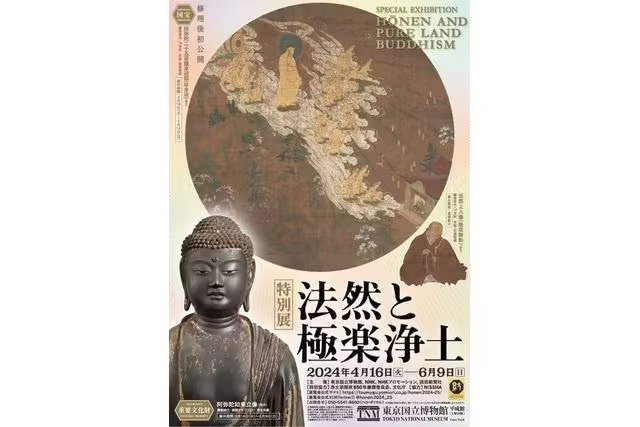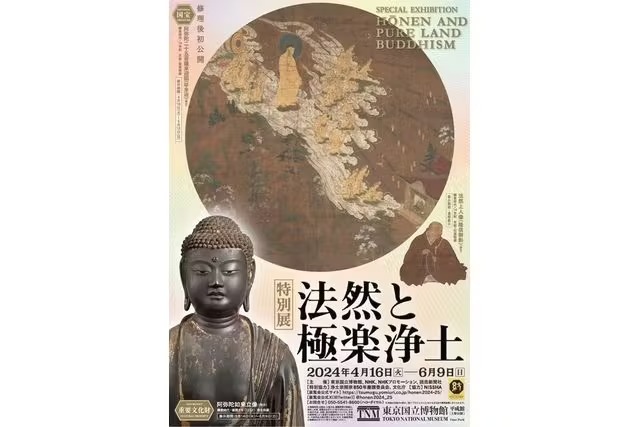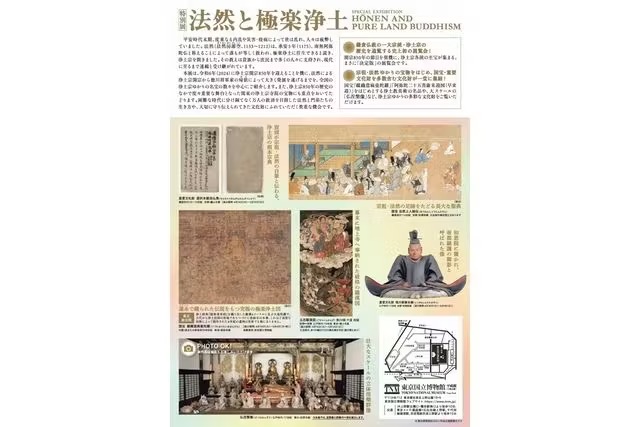"Explore the Legacy of Honen and Pure Land Buddhism at Tokyo National Museum's Special Exhibition - Tickets Available Now!"
#Special Exhibition# Honen# Pure Land Buddhism# Japanese Art# Buddhist Art# Religious Art# Cultural Heritage# Art Exhibition# History# Spiritualism# Japanese Culture# Artifacts# Sacred Objects# Buddhism# Artistic Legacy# Religious Figures# Iconography# Symbolism# Art Interpretation
5(1 ratings)
US$14
Immerse yourself in the spiritual world of Pure Land Buddhism with a visit to the Tokyo National Museum's captivating exhibition. Delve into the profound teachings and legacy of Honen, a revered figure in the history of Pure Land Buddhism, through a meticulously curated showcase of artifacts, artworks, and historical relics.
Step into a realm where art and spirituality intertwine, as you explore the life and teachings of Honen, an influential monk who revolutionized the practice of Pure Land Buddhism in Japan. Gain insights into his profound philosophy and the enduring impact of his teachings on Japanese culture and society.
Discover rare artifacts and masterpieces that offer a glimpse into the rich tapestry of Pure Land Buddhism, from intricately carved statues of Amida Buddha to exquisite scrolls depicting the Pure Land paradise. Marvel at the intricate details and spiritual symbolism infused in each artwork, reflecting the devotion and reverence of believers towards Honen and the Pure Land teachings.
As you wander through the exhibition halls, let the serene ambiance and timeless beauty of the artworks transport you to a realm of tranquility and contemplation. Engage with interactive displays and multimedia presentations that bring to life the essence of Pure Land Buddhism and the legacy of Honen in a dynamic and engaging manner.
Plan your visit to the Tokyo National Museum's special exhibition on Honen and Pure Land Buddhism with ease and convenience. Secure your tickets in advance to avoid long queues and ensure seamless entry with the convenience of QR code technology. Opt for a 1-day ticket to immerse yourself fully in the world of Pure Land Buddhism and explore the exhibition at your own pace.
Whether you are a seasoned traveler seeking spiritual enrichment or a curious explorer delving into the depths of Japanese culture, the special exhibition on Honen and Pure Land Buddhism at the Tokyo National Museum promises a transformative and enlightening experience. Embark on a journey of discovery and contemplation as you unravel the mysteries of Pure Land Buddhism and delve into the timeless teachings of Honen.
Experience the beauty, wisdom, and spiritual essence of Pure Land Buddhism in a captivating exhibition that celebrates the legacy of Honen and the enduring appeal of the Pure Land teachings. Book your tickets now and embark on a journey of spiritual discovery at the Tokyo National Museum's special exhibition on Honen and Pure Land Buddhism.
Step into a realm where art and spirituality intertwine, as you explore the life and teachings of Honen, an influential monk who revolutionized the practice of Pure Land Buddhism in Japan. Gain insights into his profound philosophy and the enduring impact of his teachings on Japanese culture and society.
Discover rare artifacts and masterpieces that offer a glimpse into the rich tapestry of Pure Land Buddhism, from intricately carved statues of Amida Buddha to exquisite scrolls depicting the Pure Land paradise. Marvel at the intricate details and spiritual symbolism infused in each artwork, reflecting the devotion and reverence of believers towards Honen and the Pure Land teachings.
As you wander through the exhibition halls, let the serene ambiance and timeless beauty of the artworks transport you to a realm of tranquility and contemplation. Engage with interactive displays and multimedia presentations that bring to life the essence of Pure Land Buddhism and the legacy of Honen in a dynamic and engaging manner.
Plan your visit to the Tokyo National Museum's special exhibition on Honen and Pure Land Buddhism with ease and convenience. Secure your tickets in advance to avoid long queues and ensure seamless entry with the convenience of QR code technology. Opt for a 1-day ticket to immerse yourself fully in the world of Pure Land Buddhism and explore the exhibition at your own pace.
Whether you are a seasoned traveler seeking spiritual enrichment or a curious explorer delving into the depths of Japanese culture, the special exhibition on Honen and Pure Land Buddhism at the Tokyo National Museum promises a transformative and enlightening experience. Embark on a journey of discovery and contemplation as you unravel the mysteries of Pure Land Buddhism and delve into the timeless teachings of Honen.
Experience the beauty, wisdom, and spiritual essence of Pure Land Buddhism in a captivating exhibition that celebrates the legacy of Honen and the enduring appeal of the Pure Land teachings. Book your tickets now and embark on a journey of spiritual discovery at the Tokyo National Museum's special exhibition on Honen and Pure Land Buddhism.
The Japanese priest Hōnen (also known as Hōnen-bō Genkū, 1133–1212) was the founder of the Jōdo Shū, Japan’s first Pure Land school of Buddhism. He lived amid a turbulent era spanning from the end of the Heian period (794–1185) to the beginning of the Kamakura period (1185–1333). During this age of upheaval, Hōnen gained widespread support by advocating that anyone, regardless of their rank or circumstances in life, has the potential to attain salvation and be born into the Pure Land paradise of Amida (Amitābha) Buddha after death. Hōnen taught that the means of achieving this is to repeatedly chant the prayerful invocation Namu Amida Butsu ("I take refuge in Amitābha Buddha"), known as the "nenbutsu." This exhibition celebrates the 850th anniversary of the founding of Jōdo Shū through an exploration of the history of Japanese Pure Land Buddhism, beginning with Hōnen's founding of the school and extending through to the creation of various denominations by his disciples and the establishment of their respective doctrines. The exhibition also examines how Jōdo Shū grew and expanded significantly through the patronage of the Tokugawa shogunate during the Edo period (1615–1868). This historical journey will be traced through precious artworks, including numerous National Treasures and Important Cultural Properties associated with this school of Pure Land Buddhism


